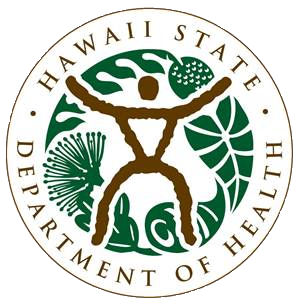HEPCRA Right-to-Know Compliance
The Hawaiʻi Emergency Planning and Community Right-to-Know Act (HEPCRA) establishes requirements for State, local and industry regarding emergency planning and “Community Right-to-Know” reporting required on hazardous and toxic chemicals. The Community Right-to-Know provisions help increase the public’s awareness of potential chemical hazards present in their communities in order to improve chemical safety and protect human health and the environment.
- Background — What is HEPCRA?
- Reporting Requirements — Links to pages with additional information on the four major provisions under this regulation.
- Procedures for Releasing Tier II Data to the Requestor — How to view information submitted under HEPCRA by submitting a Request for Public Records.
- Compliance Resources — Links for contacts, information, software and more to assist with reporting.
BACKGROUND
The Superfund Amendments and Reauthorization Act (SARA) was signed into federal law in 1986. Title III of SARA is also known as the Emergency Planning and Community Right-to-Know Act (EPCRA) or the Community Right-to-Know regulation. In 1993, the State of Hawaiʻi enacted HEPCRA (HRS 128E) which is modeled after federal EPCRA. Hawaiʻi Administrative Rules (HAR 11-453) for implementing HEPCRA regulations became effective in November 2010.
To implement HEPCRA requirements, the regulations provide for the formation of:
- The Hawaiʻi State Emergency Response Commission (HSERC) was established under §128E-2 and is responsible for the implementation of HEPCRA requirements for the State. The HSERC is housed within the HEER Office for administrative purposes.
- Local Emergency Planning Committees (LEPCs) which are established under §128E-5. LEPCs are made up of emergency management agencies, responders, industry and the public. They work to understand chemical hazards in the community, develop emergency plans in case of an accidental release, and look for ways to prevent chemical accidents. There are currently four LEPCs in Hawaiʻi, one to represent each County.
The HEER Office receives HEPCRA reports and manages HEPCRA data on behalf of the HSERC. The HEER Office also provides technical and regulatory assistance to businesses, local emergency planning committees and the public.
HEPCRA provisions help increase the public’s knowledge and access to information on chemicals at individual facilities, their uses, and releases into the environment. States and communities, working with facilities can use the information to improve chemical safety and protect public health and the environment.
The HSERC meets quarterly. Meeting announcements and agendas may be found on the State Calendar. HSERC Meeting Minutes are available following each meeting.
Under this regulation, facilities (both large and small) are required to plan for possible emergencies and report chemical information to the HSERC, LEPCs and the local fire department.
REPORTING REQUIREMENTS
HEPCRA has five major provisions.
- Emergency Response Planning – Any facility that has any of the listed Extremely Hazardous Substances (EHS) at or above its Threshold Planning Quantities (TPQs) must notify the HSERC and LEPC within 60 days after they first receive a shipment or produce the substance on site so that state and local authorities can develop chemical emergency preparedness and response capabilities through coordination with covered facilities.
- Emergency Release Reporting / When to Report a Release or Spill? – Visit this page for more information on reporting a chemical release. To report,contact the HEER Office at (808) 586-4249 (business hours) or (808) 236-8200 (after hours). Remember to also contact the LEPC and your local Fire Department.
- Hazardous Chemical Storage and Tier II Reporting – Visit this page to find information on submitting your annual filing for hazardous chemical reporting or Tier II chemical inventory reporting. There, you can download either the Hawaiʻi Chemical Inventory Form (HCIF)/Tier II Information Package or the information package specific to State Facilities; see the section titled: How Do I Report?
- Toxic Release Inventory Reporting – Manufacturing facilities in specified SIC Codes, with more than 10 employees that manufacture or process more than 25,000 pounds or otherwise use more than 10,000 pounds of the listed chemicals must submit a Toxic Release Inventory.
- America’s Water Infrastructure Act of 2018 (AWIA) – AWIA requires state and tribal emergency response commissions to notify the applicable State agency (i.e., the drinking water primacy agency) of any reportable releases and provide community water systems with hazardous chemical inventory data. In Hawaii, the drinking water primacy agency is the Safe Drinking Water Branch (SHWB).
A facility may be subject to more than one of these provisions depending on the types of chemicals stored, the quantities of stored chemicals, and the facility’s activities. For detailed information on each provision, use the links provided above.
PROCEDURES FOR RELEASING TIER II DATA TO THE REQUESTOR
The Hazard Evaluation and Emergency Response (HEER) Office handles Requests for Public Records on behalf of the Hawaii State Emergency Response Commission (HSERC). View the file below for policies and procedures.
